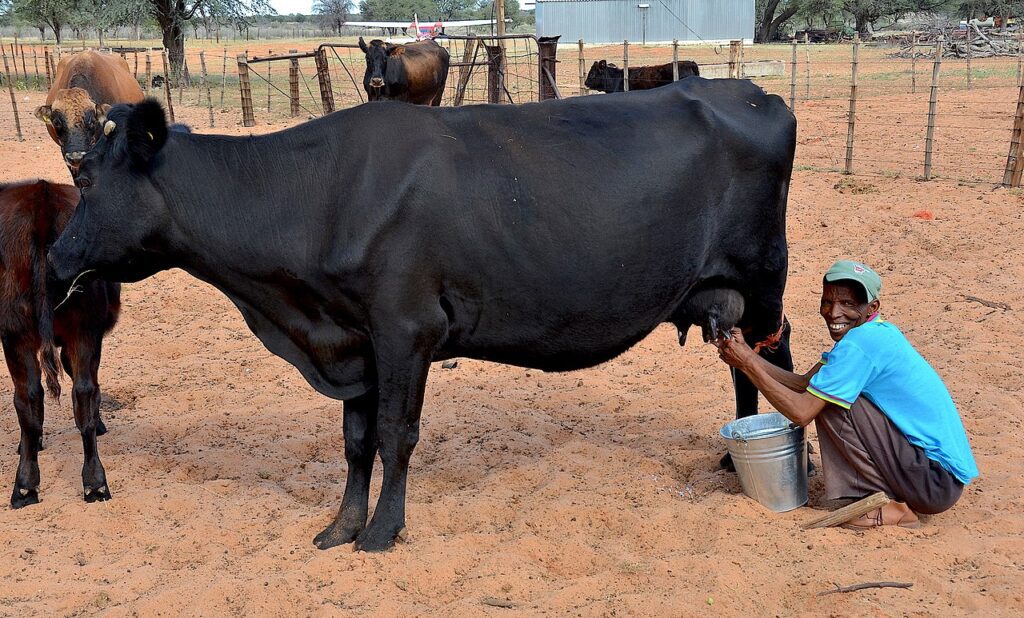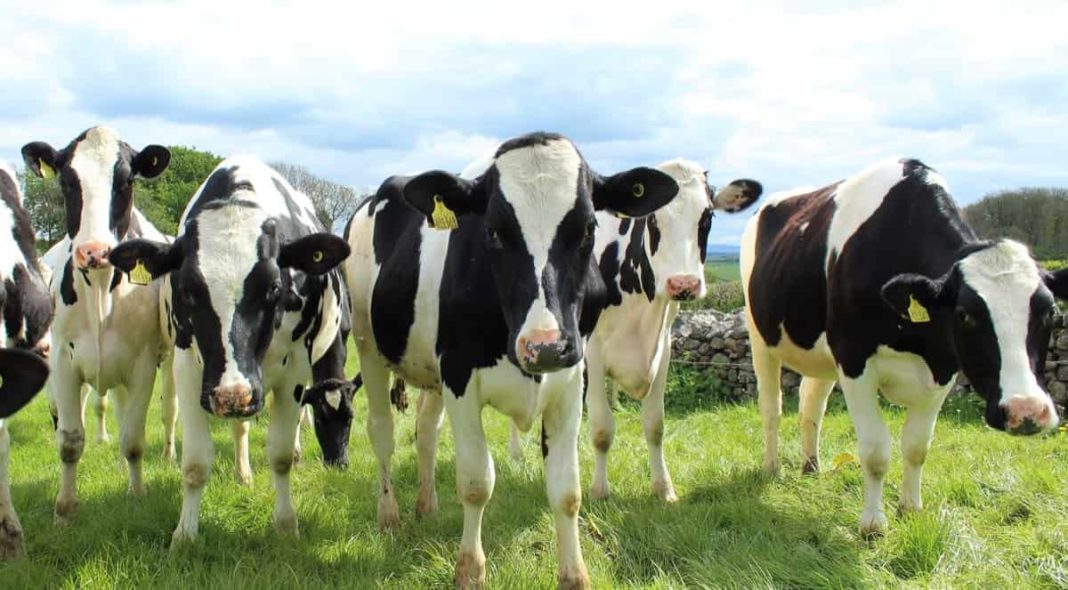Optimizing Dairy Farming Practices in Punjab

Punjab is a leading dairy state in India, contributing significantly to the national milk production. However, there is potential for further optimizing dairy farming practices to enhance productivity and sustainability.
1. Breed Improvement:

- Implement artificial insemination programs using superior bulls to upgrade the genetic potential of dairy animals.
- Promote crossbreeding with high-yielding breeds, such as Holstein-Friesian, to increase milk production and quality.
2. Nutrition Management:
- Provide adequate and balanced feed rations that meet the nutritional requirements of lactating and dry cows.
- Optimize feed utilization through proper mixing, storage, and feeding practices.
- Supplement feeds with mineral mixtures and vitamins as necessary.
3. Health and Disease Control:
- Implement regular vaccination and deworming programs to prevent and control infectious diseases.
- Maintain strict hygiene standards in housing, milking, and handling facilities to minimize disease transmission.
- Provide appropriate veterinary care and treatment when needed.
4. Housing and Management:
- Design and construct comfortable and hygienic housing facilities that provide adequate space, ventilation, and shade.
- Implement proper milking procedures, including timely milking, pre-milking preparation, and post-milking teat dipping.
- Ensure regular cleaning and disinfection of milking equipment to prevent mastitis.
5. Milk Quality and Value Addition:
- Implement quality control measures throughout the milk production process to maintain milk hygiene and safety.
- Promote value-added products, such as flavored milk, cheese, and yogurt, to increase profitability.
- Explore innovative technologies, such as electronic milk analyzers, to assess milk composition and improve quality.
6. Environmental Sustainability:
- Reduce greenhouse gas emissions through manure management practices, such as composting or biogas production.
- Implement water conservation measures, including rainwater harvesting and efficient irrigation systems.
- Promote sustainable grazing practices to prevent soil degradation and enhance biodiversity.
7. Extension Services and Training:
- Provide comprehensive extension services to farmers, covering best management practices, disease prevention, and value-added products.
- Conduct regular training programs to update farmers on emerging technologies and innovations in dairy farming.
8. Economic Analysis and Policy Support:
- Regularly monitor and analyze dairy farm profitability to identify challenges and opportunities.
- Implement policies that support dairy farmers, such as subsidized inputs, access to credit, and risk management programs.
- Encourage farmer cooperatives and collective marketing to improve bargaining power and increase returns.
By implementing these optimization strategies, dairy farmers in Punjab can enhance milk production, improve animal health, ensure milk quality, and increase their profitability while promoting environmental sustainability.## Optimizing Dairy Farming Practices In Punjab
Executive Summary
Punjab, a leading dairy producer in India, faces challenges in optimizing dairy farming practices. This article explores key subtopics, including feed management, disease control, breeding, and technology adoption, to provide insights and recommendations for enhancing productivity and profitability within the Punjab dairy sector.
Introduction
Dairy farming in Punjab plays a pivotal role in the state’s rural economy. Punjab is consistently ranked among the top Indian states in milk production. However, challenges such as feed scarcity, disease outbreaks, and inefficient breeding practices hinder the sector’s full potential. By embracing innovative practices and optimizing existing systems, Punjab can establish itself as a global leader in sustainable dairy farming.
Frequently Asked Questions (FAQs)
- What are the primary factors affecting dairy farming in Punjab?
- Feed availability and quality
- Disease prevalence
- Breeding practices
- Lack of technology adoption
- Inadequate infrastructure
- How can dairy farmers in Punjab optimize feed management?
- Utilize local feed resources such as crop residues and fodder
- Explore alternative feed sources like silage and hay
- Implement ration balancing and precision feeding
- Encourage fodder cultivation and agroforestry
- Promote pasture management practices
- What disease control measures are crucial for Punjab dairy farms?
- Implement biosecurity measures to prevent disease introduction
- Establish vaccination and deworming protocols
- Monitor animal health regularly and record data
- Conduct routine diagnostic tests to identify pathogens
- Collaborate with veterinary professionals for disease management
Subtopics
Feed Management
- Local Feed Utilization: Maximizing the use of crop residues, fodder, and green grasses.
- Alternative Feed Sources: Exploring silage, hay, and concentrate supplements to meet nutritional requirements.
- Ration Balancing: Optimizing feed composition to meet energy, protein, and mineral needs of dairy animals.
- Precision Feeding: Implementing technology to tailor feed delivery based on individual animal requirements.
- Fodder Cultivation and Agroforestry: Encouraging farmers to cultivate high-yielding fodder crops and integrate trees into farming systems.
Disease Control
- Biosecurity Measures: Implementing protocols to prevent disease entry through isolation, disinfection, and restricted access.
- Vaccination and Deworming: Establishing regular vaccination and deworming programs to protect animals from common diseases.
- Animal Health Monitoring: Regularly monitoring animal health, recording data, and identifying signs of illness.
- Diagnostic Tests: Conducting routine tests to identify pathogens and develop targeted disease management strategies.
- Veterinary Collaboration: Partnering with veterinary professionals for disease diagnosis, treatment, and prevention advice.
Breeding
- Artificial Insemination (AI): Improving genetic quality through controlled breeding using superior sires.
- Embryo Transfer Technology (ETT): Multiplying elite genetics and producing high-yielding offspring.
- Pedigree and Performance Recording: Maintaining records of animal lineage and performance to make informed breeding decisions.
- Selection for Desired Traits: Focusing on traits such as milk yield, fat content, and disease resistance.
- Crossbreeding and Breed Improvement: Introducing new breeds or crossing breeds to enhance productivity and adapt to local conditions.
Technology Adoption
- Smart Farming Technologies: Utilizing sensors, data analytics, and automation to monitor livestock, optimize feed management, and detect diseases early.
- Precision Agriculture: Implementing technologies to manage soil, water, and crop production efficiently.
- Lactation Monitoring Systems: Tracking milk yield, fat content, and other lactation parameters to optimize animal performance.
- Disease Detection and Management Tools: Using sensors, cameras, and data analysis to identify and respond to diseases promptly.
- Farm Management Software: Centralizing farm data, automating tasks, and providing insights for decision-making.
Conclusion
Optimizing dairy farming practices in Punjab requires a multifaceted approach that addresses key challenges and embraces innovative solutions. By optimizing feed management, enhancing disease control, improving breeding practices, adopting technology, and collaborating with experts, Punjab can revolutionize its dairy sector and become a global dairy powerhouse.
Keyword Tags
- Dairy Farming Punjab
- Feed Management Dairy
- Disease Control Dairy
- Breeding in Dairy Farming
- Technology Adoption Dairy